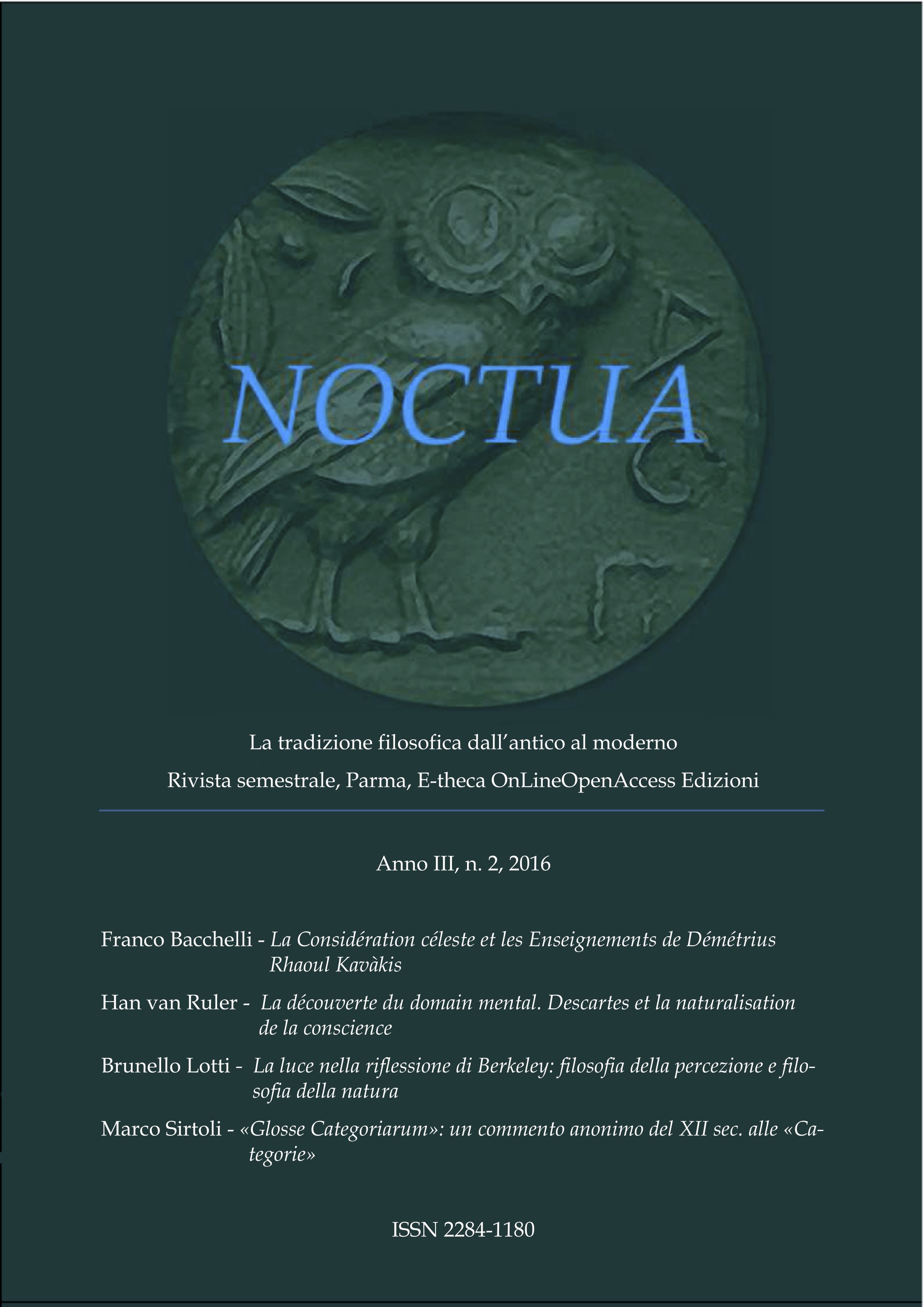La luce nella riflessione di Berkeley: filosofia della percezione e filosofia della natura
DOI:
https://doi.org/10.14640/NoctuaIII7Parole chiave:
George Berkeley, colours, Essay for a New Theory of Vision, light, SirisAbstract
In Berkeley’s writings the topic of light is discussed in two different ways, within a theory of perception and within a metaphysics of nature of a Platonic stamp. In his first work, the original Essay for a New Theory of Vision (1709), light and colours are regarded as condition and object of vision; they are examined as contents of visual perception distinct from tangible perception. Light will be dealt with in a completely different manner in Berkeley’s last work, Siris (1744), in which a spiritualistic reading of the natural world is superimposed on modern science in general and on Newtonian physics in particular. In Siris, light (or invisible fire) is the instrument by which the causal activity of divine Intellect orders and permeates the natural world. A detailed analysis of the topic of light in the two aforementioned contexts shows inconsistencies and strained interpretations which derive from the apologetic use of the theory of vision in Berkeley’s early immaterialism and from the multi-layered and confused speculations of his late Siris. On the whole, Berkeley conceives light within the idealistic frame inherited from Platonic metaphysics of light; however, the specific themes examined in the Essay for a New Theory of Vision and in Siris derive from acquisitions of modern science, and are recast within a spiritualistic interpretation which intended both to neutralize scientific ideas through their phenomenistic reading and to exploit them for apologetic ends.
##submission.downloads##
Pubblicato
Fascicolo
Sezione
Licenza
Noctua pubblica contributi Diamond Open Access secondo i termini della licenza CC BY / Noctua publishes Diamond Open Access contributions under the terms of the CC BY license.







